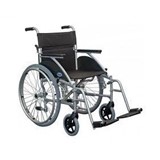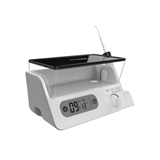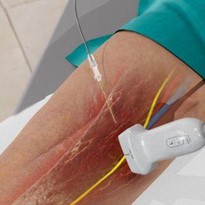Depth perception is crucial when instrumenting in the ear canal to ensure the safety, accuracy and comfort of the patient while preventing complications and maintaining professional standards of care. Healthcare professionals such as ENT surgeons, General Practitioners and Audiologists rely on the VorOtek O Scope to enhance their ability to accurately judge depth to perform procedures and examinations within the ear canal effectively.
Only medical devices such as the VorOtek O Scope or ENT Operating Microscopes have an optical pathway which allows both eyes to reach the bottom of the ear canal and deliver excellent depth perception (figure 1).
Other devices, such a traditional Loupes, have an optical pathway that is unable to achieve convergence in the ear canal. Loupes can only achieve monocular vision in the ear canal leading to poor depth perception (figure 2).
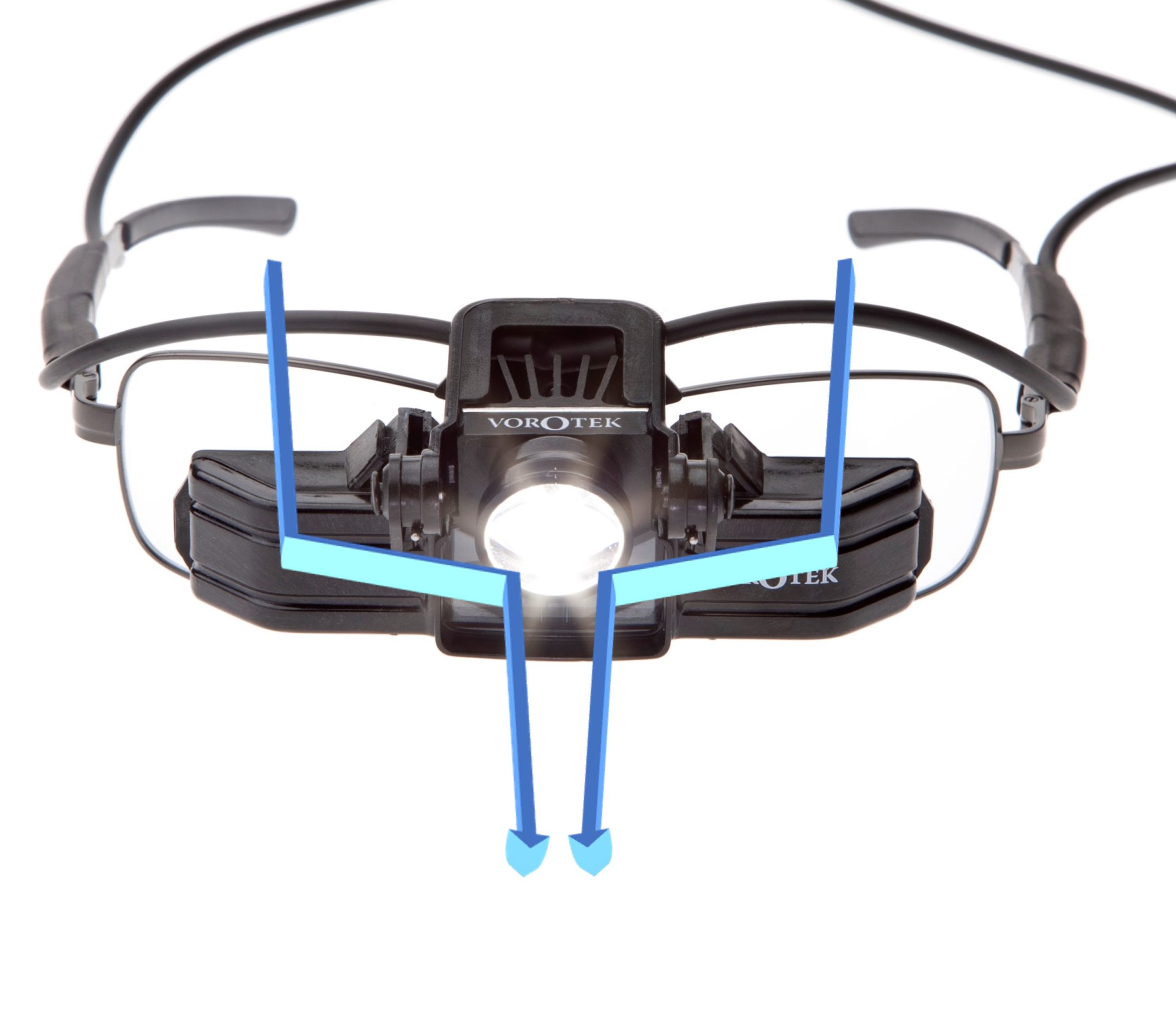
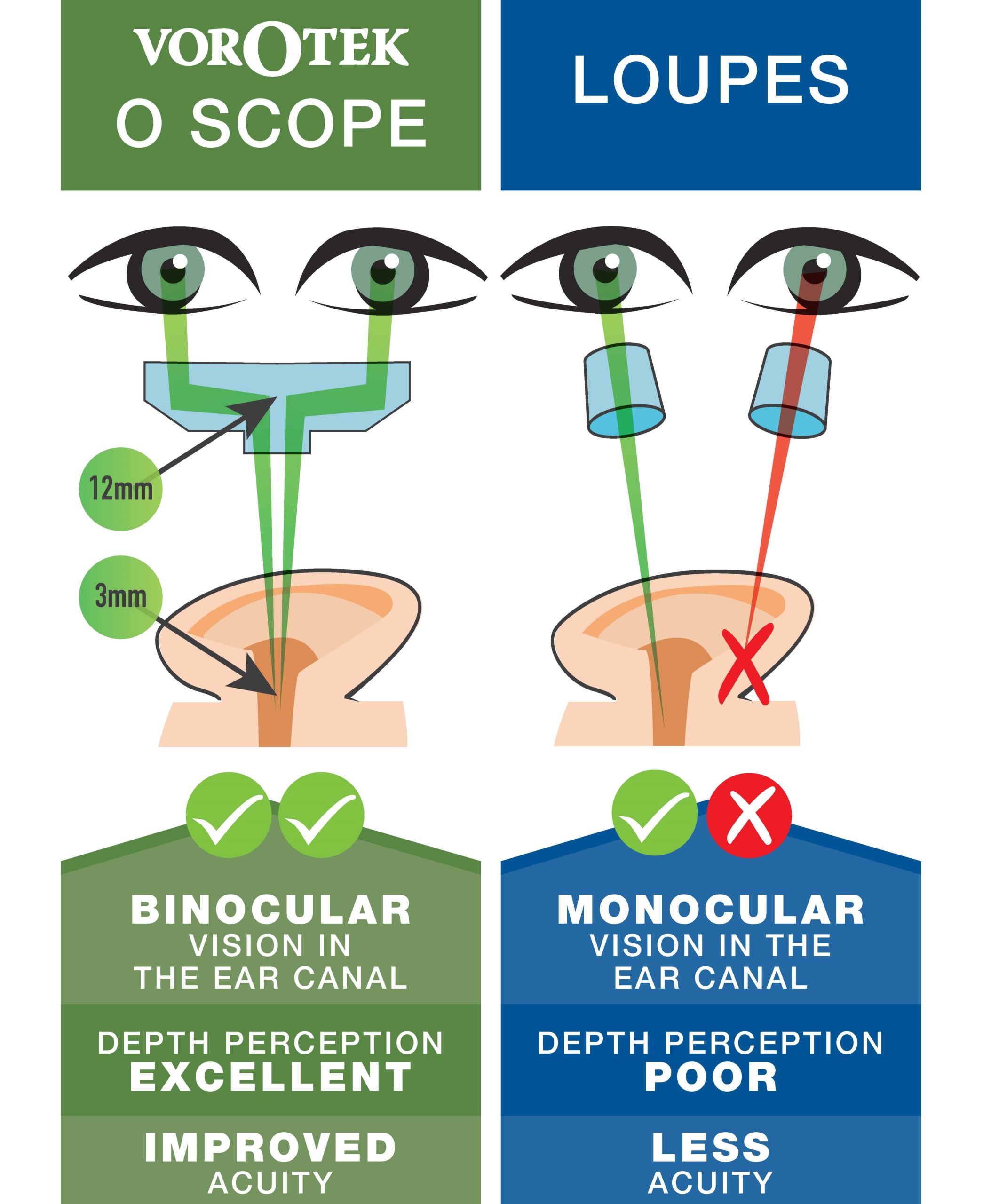
Depth perception is crucial when instrumenting in the ear canal for several reasons:
Precision and Accuracy: The ear canal is a sensitive and delicate structure, and any instrumentation within it requires precision. Depth perception helps the practitioner accurately judge the location and distance to the eardrum or other anatomical structures. This precision is critical for procedures like earwax removal, foreign body extraction, and ear examinations.
Safety: Proper depth perception allows the practitioner to work within the ear canal while minimizing patient discomfort and reducing the risk of injury. It ensures that instruments, such as suction tubes or curettes, are inserted only as far as necessary to perform the procedure safely.
Diagnostic Accuracy: For healthcare professionals, depth perception is essential for accurately assessing the condition of the ear canal and eardrum. When examining the ear, depth perception helps detect abnormalities, infections, or injuries, ensuring an accurate diagnosis.
Patient Comfort: The sense of depth perception contributes to the practitioner’s ability to work efficiently and with less discomfort for the patient. A practitioner with good depth perception can perform procedures more quickly, reducing the duration of discomfort for the patient.
Minimizing Complications: Inaccurate depth perception may lead to complications, such as pushing earwax deeper into the ear canal or damaging the eardrum during earwax removal. Proper depth perception helps prevent these issues.



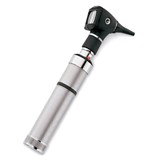
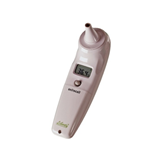
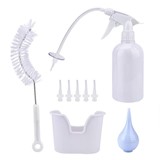
-160x160-state_article-rel-cat.png)

